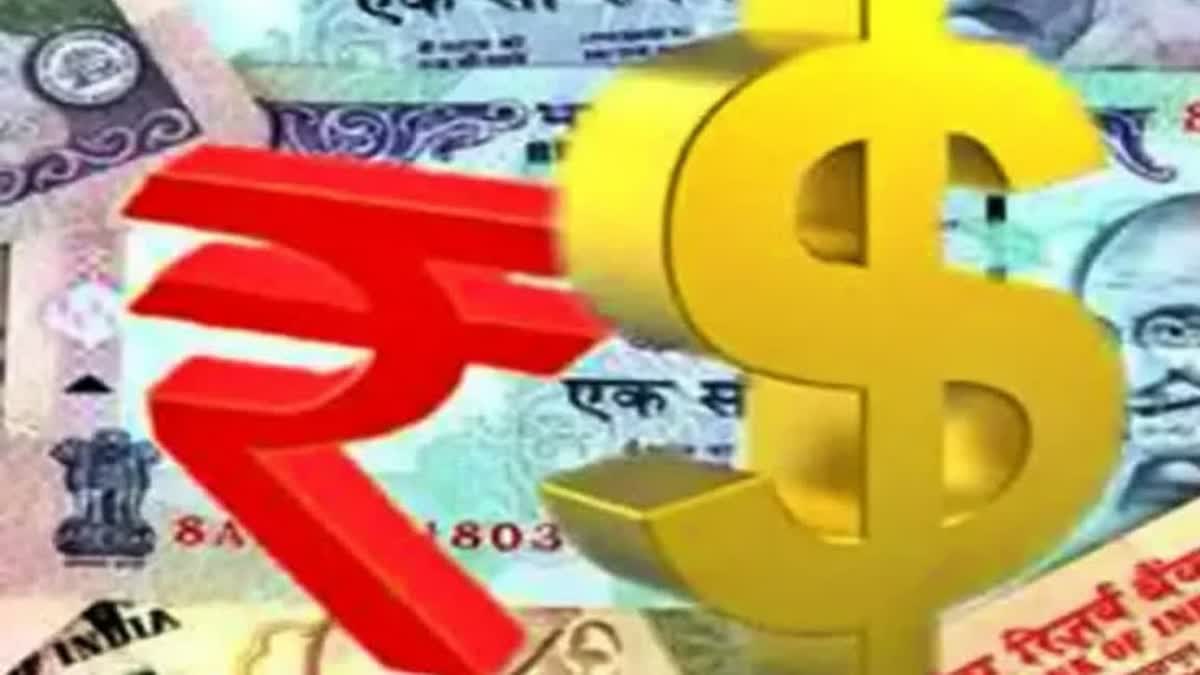Hyderabad: The Indian Rupee's current predicament is one that demands serious attention and strategic action. Its alarming depreciation against the US Dollar, with one Dollar now commanding more than 83 Rupees, raises concerns about the economic stability of a nation that once saw the Rupee and the Dollar on par at the time of independence.
In 2014, the Rupee was stronger, with the exchange rate at 63 Rupees to a Dollar. Recent interventions by the Reserve Bank momentarily halted the Rupee's freefall, settling it at around 83.21, but the overarching question remains: Is there a viable path to recovery for the Indian Rupee? Just over a year ago, experts were commending the Rupee's resilience against the Dollar amidst a global financial landscape characterised by currency struggles.
However, in April-May 2023, ominous predictions emerged, signaling the Rupee's depreciation. This worrying forecast coincided with inflation concerns and the looming specter of an international recession. The primary cause of these concerns was the anticipated increase in the US Federal Reserve interest rates, prompting investors to withdraw their dollar-denominated investments from emerging markets, including India.
The present depreciation of the Rupee has far exceeded the pessimistic projections of experts. For instance, Pakistan's Rupee has suffered significantly due to recession fears in China, with one Dollar now fetching approximately 300 Rupees in Pakistan. Nepal is grappling with a similar issue, as the value of the Dollar has soared to 133 Rupees.
India's currency has not been immune to these challenges, and it's imperative to acknowledge that the prospects for Rupee recovery appear bleak, given the continuous outflow of foreign investments and the Dollar's unwavering strength. These factors have taken a toll on the Rupee's value, and indications point towards this precarious situation persisting, causing widespread unease throughout the nation.
In the backdrop of this currency crisis, the responses of government officials are noteworthy. Union Finance Minister Nirmala Sitharaman's statement about the Rupee nearing an "appropriate level" when it approached 80 Rupees per Dollar ignited outrage among the public. This statement, much like former Finance Minister Chidambaram's reassurance ten years ago, downplayed the severity of the issue and reflected a lack of proactive government response to currency depreciation.
In reality, a robust and democratic government should respond decisively when the national currency depreciates. Neglecting to address Rupee depreciation in a timely manner could have dire consequences on the nation's growth rate, trade balance, and inflation levels. As the current account deficit widens, the Rupee's weakness persists.
The global rise in fuel prices and its contribution to inflation, compounded by interest rate adjustments made by banks across the globe, further bolster the Dollar's strength. Currencies that should ideally be in competition have collectively suffered, posing a dire situation for India. Without intervention, the external debt burden will continue to mount, and the cost of imported goods, and subsequently, the prices of products manufactured from them will soar.
Studying abroad will become a more expensive endeavor, and the overall increase in fuel prices and transportation costs will have a severe impact on essential commodities. The pressing question remains: Can India find an alternative path to salvage the Rupee's decline? The answer is affirmative, but it requires concerted efforts on various fronts.
Also read:Rupee rises 5 paise to close at 83.06 against US dollar
To begin with, the nation should focus on reducing its import burden and accelerating the search for alternative energy sources. Implementing a nationwide agricultural plan on a grand scale can substantially reduce India's dependence on imported cooking oil and pulses. Only by bringing the trade deficit and current account deficit under control can the beleaguered Rupee hope for recovery. India, with its robust manufacturing and services sectors, should be less susceptible to the adverse impacts of currency fluctuations.
The way forward necessitates a comprehensive, well-thought-out strategy. One aspect of this strategy should involve reducing reliance on imported goods, especially in sectors where domestic production can be enhanced. Additionally, renewable energy sources should be harnessed more effectively to reduce the nation's reliance on imported fossil fuels.
In the realm of agriculture, India must focus on enhancing self-sufficiency. Boosting domestic production of essential crops, such as cooking oil and pulses, will not only reduce import bills but also bolster food security. Furthermore, incentivising foreign direct investment and domestic industries can help stabilise the Rupee.
Encouraging global companies to invest in India and supporting the growth of domestic industries can create a more balanced foreign exchange market. To mitigate the impact of rising fuel prices and transportation costs, governments at the state and national levels should consider measures such as targeted subsidies and investment in public transportation infrastructure. These initiatives can help shield consumers from the full brunt of these price increases.
In conclusion, the path to the Rupee's recovery is fraught with challenges, but it is not insurmountable. It requires a multi-faceted approach that encompasses fiscal and economic policies, strategic investments, and international cooperation. India, with its vast and diverse economy, is well-positioned to weather these currency storms and emerge stronger. By taking proactive measures and making concerted efforts to reduce import dependency and promote domestic growth, India can set the stage for a Rupee revival, ensuring a more stable and prosperous future for its citizens.
